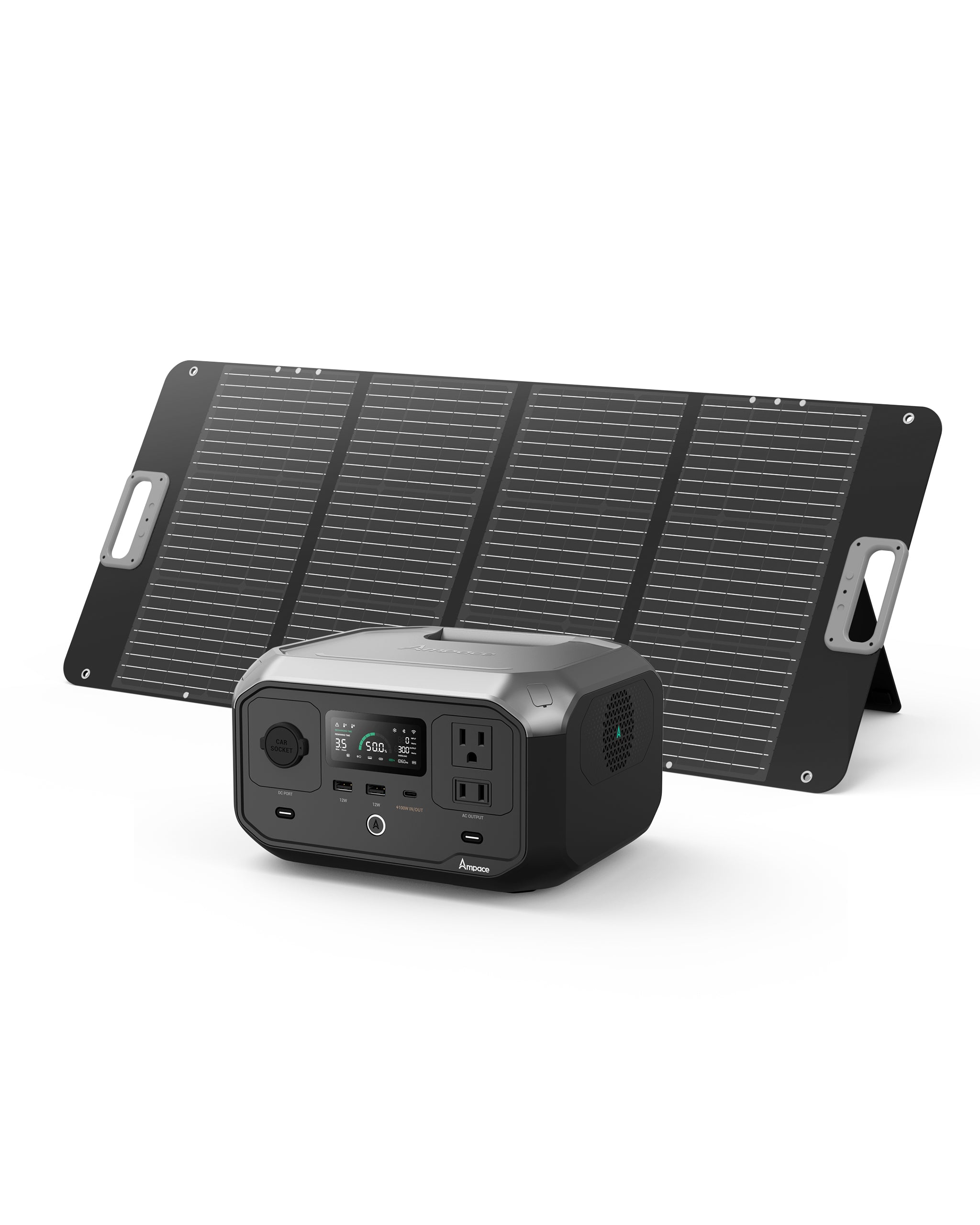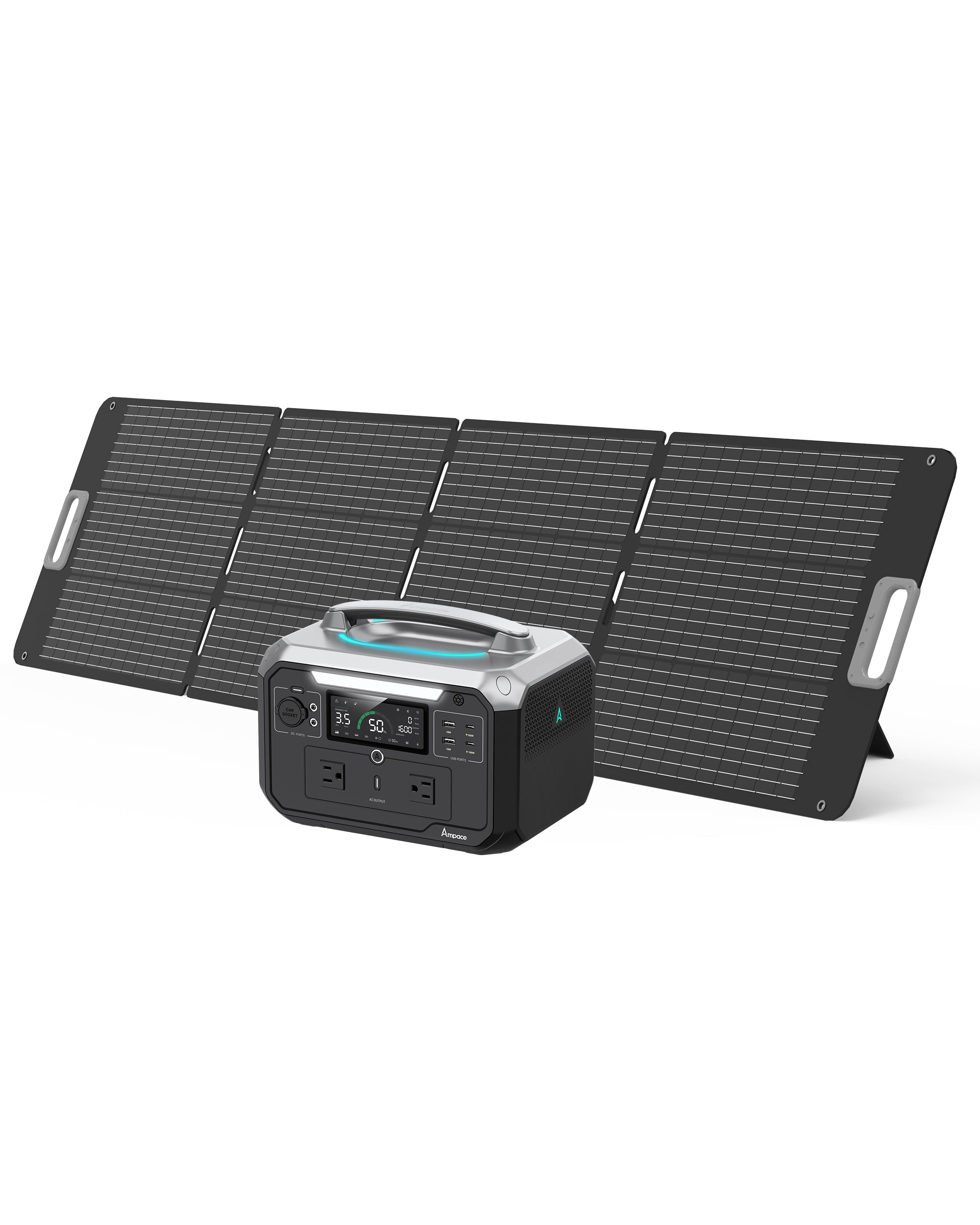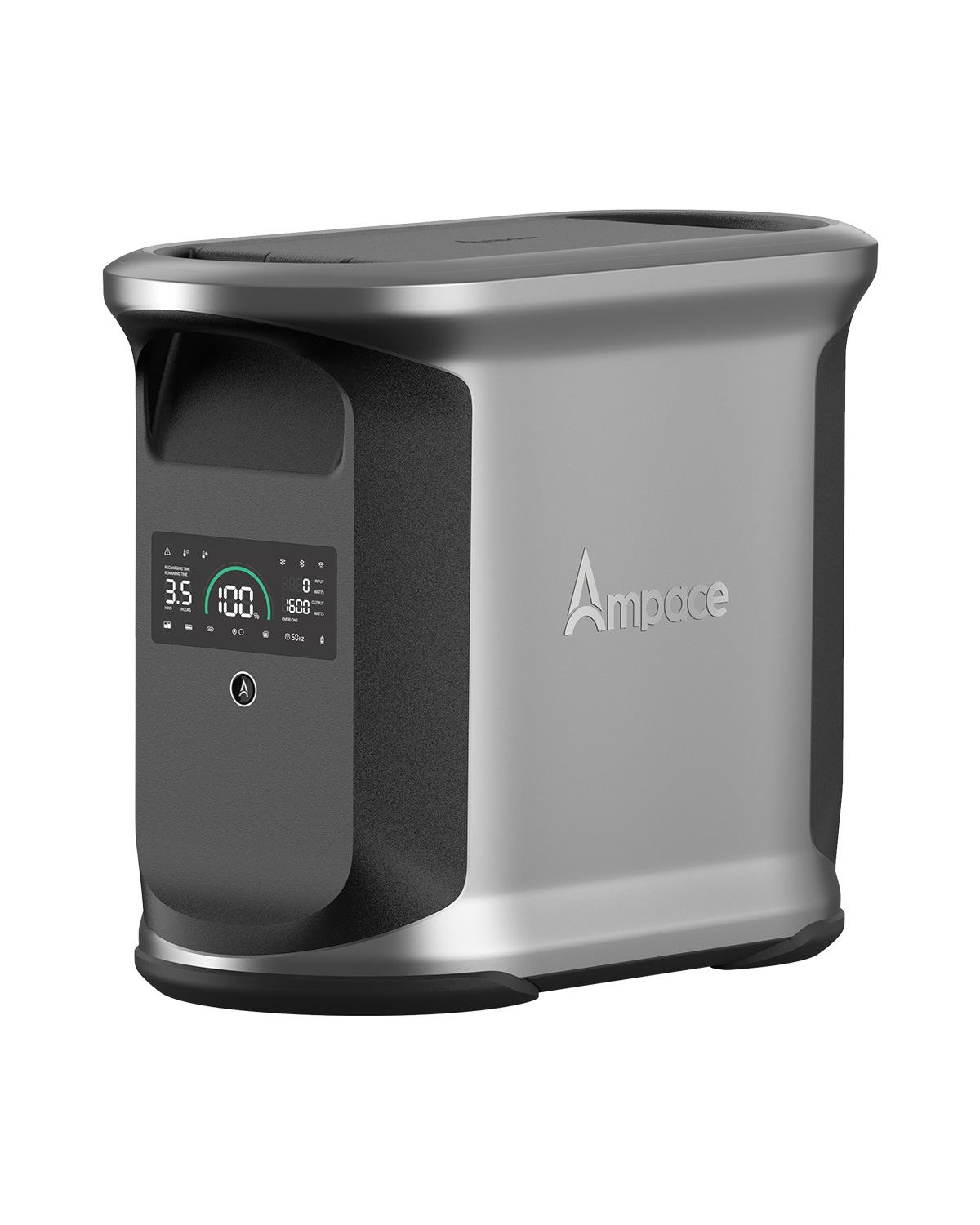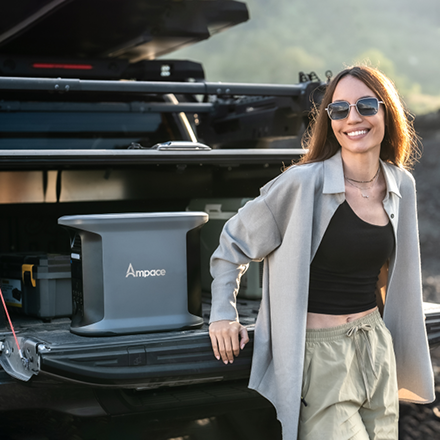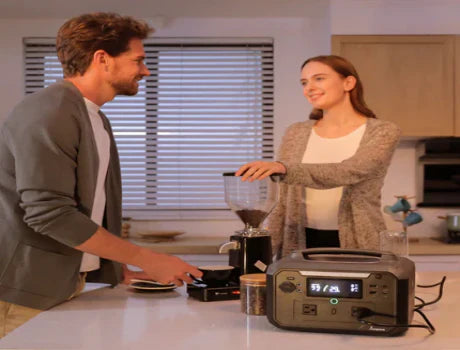Portable Power Station vs Power Bank: Which Is Better?
Many people confuse backup power with portable power stations, thinking they work the same—both used during outages or on the go. But there are clear differences. A portable power station is more than just a bigger power bank; it’s a new way to meet your power needs.
When running high-power appliances like fridges, induction cookers, CPAP machines, or power tools, power banks usually can’t handle it. Portable power stations can. They have bigger capacity, more output ports (AC, DC, USB-C, car charger, etc.), and support outdoor use, emergencies, and backup power. Choosing Ampace gives you stable output, longer battery life, and smarter energy use.
This guide will break down the main differences between portable power stations and power banks, help you decide when to upgrade, and show why more people now rely on portable power stations at home and outdoors.

What is a Portable Power Station?
A portable power station is a high-capacity, multi-functional power device designed to supply electricity to a wide range of appliances and electronics. Unlike traditional power banks, portable power stations can support high-wattage devices like refrigerators, CPAP machines, electric tools, or even induction cooktops. They typically feature:
- Large battery capacity (often 200Wh to over 2000Wh)
- Multiple output ports (AC outlets, DC ports, USB-C, USB-A, car chargers)
- High power output (100W to several kilowatts)
- Support for diverse scenarios, including outdoor camping, emergency backup, off-grid living, and UPS (uninterruptible power supply) functionality
- Advanced features like solar charging compatibility, smart power management, and long-lasting battery lifespans
Brands like Ampace offer reliable portable power stations with robust output, extended durability, and intelligent energy management, making them ideal for both home and outdoor use.
What is a Power Bank?
A power bank is a compact, portable device designed to charge low-power electronics like smartphones, tablets, earbuds, or smartwatches. Power banks are convenient for daily use but have limitations:
- Smaller battery capacity (typically 5,000mAh to 30,000mAh, or roughly 18Wh to 110Wh)
- Limited output ports (mostly USB-A, USB-C, sometimes wireless charging)
- Low power output (usually 10W to 65W, insufficient for high-wattage appliances)
- Primary use case: On-the-go charging for small devices
- Lightweight and pocket-friendly, prioritizing portability over versatility
While power banks are great for keeping your phone alive during a busy day, they fall short when powering larger devices or supporting complex power needs.

Key Specifications to Consider When Buying
Whether you’re shopping for a power bank or a portable power station, understanding technical specifications is crucial to ensure the device meets your needs. Here are the most important factors to evaluate:
Battery Capacity
- Power Bank: Measured in mAh (milliamp-hours). A 10,000mAh power bank can charge a typical smartphone 2–3 times.
- Portable Power Station: Measured in Wh (watt-hours). A 500Wh station can power a 50W device for 10 hours.
Tip: Calculate your device’s power consumption (watts × hours) to estimate runtime.
Power Output (Wattage)
- Ensure the device can handle the wattage of your appliances. For example, a fridge may require 100–200W, while a phone needs only 10–20W.
- Look for surge power ratings on portable power stations, as some appliances draw extra power when starting.
Output Ports
- Check for sufficient ports to charge multiple devices simultaneously.
- For power stations, prioritize AC outlets for appliances and USB-C for modern gadgets.
Charging Methods
- Power Banks: Typically charge via USB or wall adapters.
- Portable Power Stations: Support wall charging, solar panels, or car chargers. Solar compatibility is ideal for off-grid use.
Safety Features
- Look for protections against overcharging, overheating, short circuits, and low battery levels.
- Power stations should include BMS (Battery Management Systems) for safe operation.
Portability
- For power banks, prioritize lightweight designs for daily carry.
- For power stations, consider weight and handles for transport, especially for camping or RV use.
Additional Features
- Power Banks: Fast charging (PD/QC), wireless charging.
- Power Stations: LCD displays, app-based monitoring, UPS mode, solar input.
Key Differences Between Portable Power Stations and Power Banks
|
Feature |
Portable Power Station |
Power Bank |
|
Battery Capacity |
200Wh–2000Wh+ |
18Wh–110Wh (5,000mAh–30,000mAh) |
|
Power Output |
100W–several kW, supports high-wattage appliances |
10W–65W, limited to small devices |
|
Output Ports |
AC, DC, USB-C, USB-A, car charger, etc. |
USB-A, USB-C, sometimes wireless |
|
Use Cases |
Camping, emergency backup, off-grid, UPS |
Daily charging for phones, tablets, earbuds |
|
Charging Options |
Wall outlet, solar panels, car charger |
Wall outlet, sometimes USB |
|
Weight & Portability |
Heavier (5–50 lbs), less pocket-friendly |
Lightweight (0.2–1 lb), highly portable |
Portable Power Stations Vs. Power Banks Which is better?
Choosing between a power bank and a portable power station comes down to your actual power needs. If you just need to charge your phone, earbuds, or tablet during daily use or short trips, a power bank is more convenient and affordable. But if you need to run high-power devices like a laptop, CPAP machine, mini fridge, or electric cooker—especially during camping, power outages, or off-grid situations—a portable power station is the better choice. Consider what you’ll be powering, for how long, and in what environment before making your decision.

Ampace Andes Portable Power Stations
Ampace portable power stations are ideal for charging phones during travel, camping, or power outages. They offer high-capacity, durable solutions with three models:
Ampace Andes 300
With a 266Wh capacity and 300W output (450W surge), this lightweight 8.2 lbs (3.72 kg) power station is perfect for camping or travel. It features six ports, including a 100W USB-C PD, two USB-A (12W), two AC outlets, and a 120W car socket. It charges to 80% in 45 minutes via AC, or in 2.5 hours with a 100W solar panel, and supports car charging. With 2500+ charge cycles (~10 years), it’s ideal for powering phones, tablets, or small appliances like mini-fridges during short outdoor trips.

Ampace Andes 600 Pro
Offering a 584Wh capacity and 600W output (1800W surge), this 16.8 lbs (7.6 kg)model is suited for RV camping or home backup. It includes nine ports: two AC outlets, two 100W USB-C, two 18W USB-A, a 120W car socket, and two 120W DC ports. It charges to 80% in 1 hour via AC or 3–5 hours with a 200W solar panel, with car charging supported. With 2000+ cycles (~10 years), it powers laptops, portable heaters, or CPAP machines with ease.

Ampace Andes 1500
Designed for heavy-duty needs, this 1462Wh power station delivers a robust 2400W output (3600W surge) and weighs 36.8 lbs (16.7 kg). It features 13 ports: four AC outlets, two 100W USB-C, four 18W USB-A, a 120W car socket, and two 120W DC ports. It fully charges in 55 minutes via AC or 3–5 hours with a 600W solar panel, with car charging available. With 6000+ cycles (~10+ years), it’s perfect for home outages or off-grid living, powering 99% of household appliances like fridges or electric pots.






